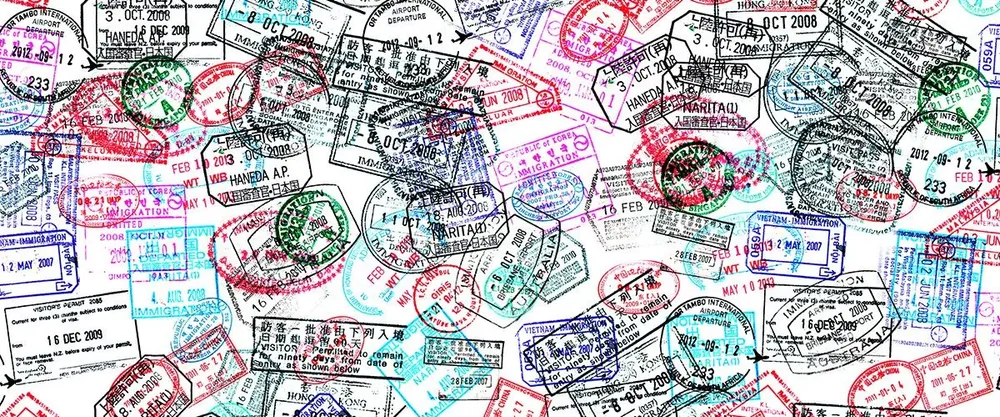The number of short-term visa holders in Australia rose to 2.4 million throughout the years leading up to the pandemic and then fell to 1.8 million after the border closures were implemented. Skill shortages — which have worsened as a result of the epidemic's decline in migration — are impeding economic growth, according to business leaders.
The Australian Labor Party's promise to make obtaining permanent residency easier for foreign workers has been well-received by the business sector. Businesses have expressed concerns that Australia is engaged in a global struggle for talent, which has resulted in the country becoming more unattractive as a destination for skilled immigrants.
To attract prospective migrants, the pathway to permanent residence needs to be more certain and predictable. So, the federal government has introduced new legislation that will enable certain temporary skilled visa holders to apply for permanent residence (PR) in Australia.
Here’s everything you need to know about Australia’s skilled migration permanent residency pathways.
Major changes that help employers keep foreign workers in Australia
In March, the Australian Government released an amendment to legislation that affects permanent residence pathways for subclass 482 and 457 visa holders on the Short-Term Skilled Occupation List (STSOL).
From July 1st, a certain cohort of 457 or 482 visa holders that are nominated for an occupation on the Short-term Skilled Occupation List (STSOL) will be able to apply for a permanent residence visa through the Subclass 186 Temporary Residence Transition Stream (TRTS).
There are some restrictions to eligibility. Short-Term subclass 482 or 457 visa holders will be able to apply for permanent residency if they have worked in the same job for three of the past four years, or two of the past three years (if they were a 457 visa holder, or applied for the visa on or before 18 April 2017). They must also have been in Australia for at least 12 months between 1 February 2020 and 14 December 2021.
This pathway is aimed at benefiting those temporary visa holders who were effectively ‘trapped’ in Australia during the COVID-19 pandemic lockdowns.
The amendment provides benefits for affected temporary visa holders who have been handicapped by unpaid leave or reduced work periods caused by the COVID-19 pandemic. The new legislation lowers the work requirement for subclass 457/482 visa holders who have been on reduced or unpaid leave because of COVID-19.
In order to apply for permanent residency, the 457/482 visa holder must have been employed in the nominated position on a full-time basis or was on reduced hours or unpaid leave due to the pandemic for a period of two or three years.
The Department of Home Affairs has indicated that the Government’s intention is to only allow these concessions for two years until 1 July 2024, despite the lack of legislative basis for this. The new Government however may choose to continue with the 2 year window with further legislation to formalise the time limit, alternatively they may make decisions to render the pathways redundant by changing the visa program.
Changes to the Short-Term Skilled Occupation List will benefit Australian employers and foreign workers
Even though many border crossings have been re-opened, many workers are still waiting to return to Australia. According to the Department of Home Affairs, just 23,000 Temporary Skill Shortage visa holders have arrived in Australia over the previous five months. There are more than 24,000 individuals on visas in that category who still reside offshore.
Business leaders are sounding the alarm as job openings across the country reach record highs. According to the most recent Australian Bureau of Statistics data, there were 423,500 unfilled jobs in April, up 6.9 per cent from November. Employers in a variety of sectors are having difficulty finding qualified workers, but the healthcare sector has been particularly tough. There is also a dearth of engineers, tradespeople, technicians, and skilled workers with digital abilities.
The creation of this new pathway aims to assist Australian businesses in key sectors such as hospitality and healthcare overcome existing skill shortages, which are still being confronted as the Australian economy rebounds from the COVID-19 pandemic.
Here are some hypothetical examples of visa holders who will benefit from these changes to permanent residence pathways:
Jane on a Subclass 482 visa granted in 2019
Jane is an ICT Business Development Manager (this occupation can be found on the short-term list) who was sponsored on a Subclass 482 visa granted on 8 January 2019. Jane kept her job, renewed her Subclass 482 visa in January 2021, and she did not leave Australia between 1 February 2020 and 14 December 2021 (also known as the “Pandemic Period”).
Am I able to apply for another short-term TSS visa in Australia?
Previously, visa holders who have held more than one short-term TSS visa were required to depart Australia and apply for a third short-term TSS visa offshore. However, the implementation of the COVID-19 concession means that she can apply for a third short-term TSS visa while in Australia before 1 July 2023.
Am I eligible for permanent residency in Australia?
She should be eligible for permanent residency under Temporary Residence Transition Stream on 8 January 2022 as she worked as an ICT Business Development Manager for a period of three years in the last four years and has been in Australia for at least 12 months between 1 February 2022 and 14 December 2021.
Andrew on a Subclass 457 visa sponsored by a new employer in Australia
Andrew is a Marketing Specialist who was granted a Subclass 457 visa in March 2018 and he transferred his visa to a new sponsoring employer in November 2019. His new employer sponsored Andrew’s Subclass 482 visa again in 2020 for another two years. Due to the pandemic, Andrew was furloughed for five months, but he resumed his full-time employment after the business picked up again. Andrew remained in Australia between 1 February 2020 and 14 December 2021.
Am I eligible for permanent residency?
He should be eligible for permanent residency under the Temporary Residence Transition Stream in November 2022 when he reaches three years of sponsored employment as a Marketing Specialist. Before he can apply for permanent residency, he will need to apply for his Subclass 482 visa while in Australia.
Australia’s immigration rules can be complicated.
The availability of a path to permanent residency for temporary skilled visa holders is critical to retaining the country's top talent and managing its acute workforce shortage. Right now, Australia’s immigration rules are especially complicated with constant COVID-related changes. Fortunately, you can rely on Fiona Wong and Gilton Valeo for expert guidance and advice.
If you’re looking to fill a role with foreign talent or if you’re interested in moving your company to Australia, Gilton Valeo can help. As experts in Australia’s immigration system, they can guide you in identifying the best immigration pathways and will manage every step of the process.
Want to learn more about the firm and everything they have to offer 👉 Contact Fiona



